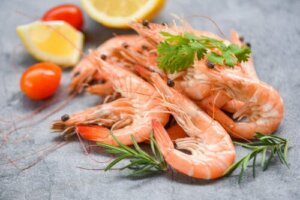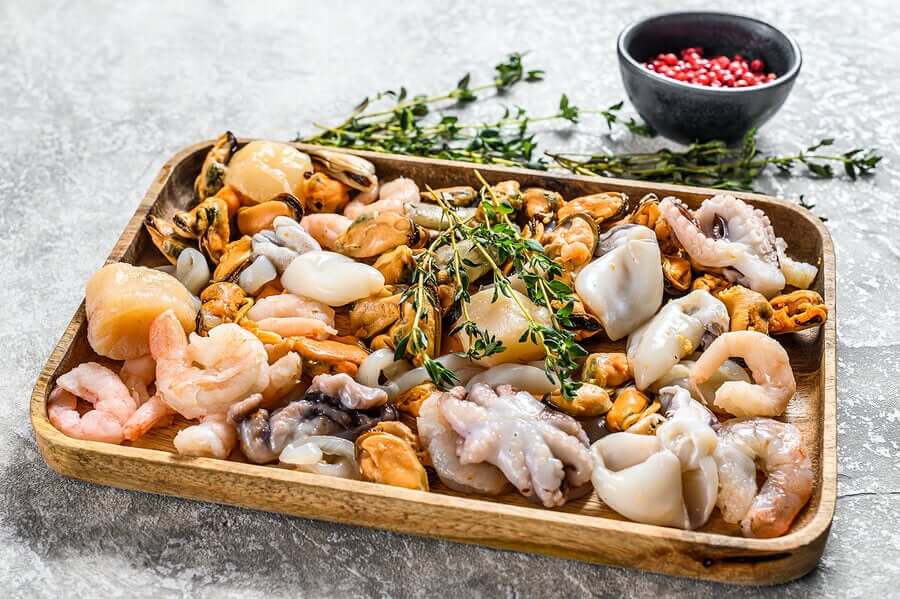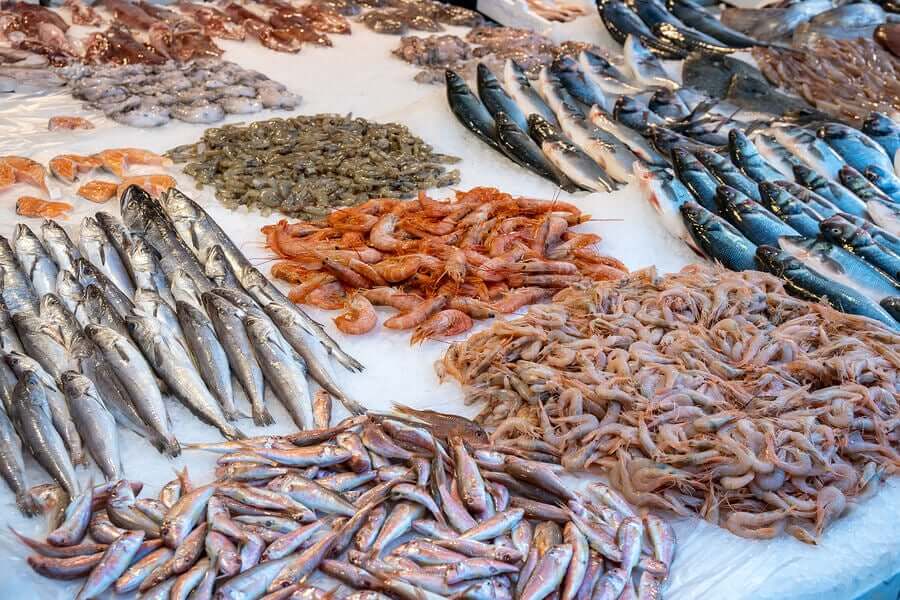The Dangers of Eating Seafood


Written and verified by the biologist María Muñoz Navarro
When eating seafood, you must meet strict food hygiene standards. Both fish and shellfish are foods that spoil easily due to microbiological damage. Microbial action impairs both shelf life and safety.
Did you know that contamination of seafood can occur at any time, both at harvest and during cooking handling? This makes it a major source of foodborne illness.
In addition, raw food consumption is a new culinary habit that puts health at risk. Knowing this, we’ll be sharing information on some of the microorganisms present in seafood.
Find out about them!
Eating seafood and microorganisms that cause illnesses
Bacteria, viruses, and parasites are all issues implicated in the outbreak of illnesses due to eating seafood. Most of them are found naturally in the environment and pose a health risk if not cooked properly.
Despite strict hygiene and safety standards being followed by industries, outbreaks of seafood consumption infections due to cross-contamination or during handling are common nowadays.

Bacteria
Salmonella is one of the main bacteria causing foodborne illness (FBD) worldwide. People contract Salmonellosis through the consumption of food or water contaminated by this bacterium.
Numerous studies have demonstrated the presence of Salmonella in oysters and shellfish worldwide, causing diseases such as gastroenteritis.
On the other hand, we find Listeria monocytogenes, another bacteria that pose a risk to public health. This microorganism can grow and develop at low temperatures and withstanding high salt concentrations.
This explains why scientists have found it in ready-to-eat processed products, such as crab meat, that people don’t heat sufficiently.
Vibrio cholerae is the bacterium that causes cholera and cases have been reported in people who have eaten contaminated crabs. It’s a naturally occurring bacterium in the marine environment, with the ability to adhere to numerous surfaces such as crustacean shells.
Studies suggest that the degree and time of cooking are critical to the destruction of these bacteria.
Discover: Tips for the Prevention of Salmonellosis
Viruses from eating seafood
Many bivalve mollusks act as filter feeders. This allows them to accumulate both viruses and bacteria, being a focus of infection. Viruses can remain in these mollusks for a long period of time. In addition, they can be transmitted, even after enduring a purification process.
Norovirus is an enteric virus causing viral gastroenteritis, which has caused several outbreaks worldwide. These outbreaks were due to people eating oysters (and other bivalves), and have been detected in shellfish whose microbiological tests showed low levels of bacteria and which met health standards.
On the other hand, the hepatitis A virus transmits via the fecal-oral route, either by consumption of contaminated food or because it’s poorly cooked. Scientists consider the ingestion of raw clams and oysters to be the most frequent source of infection.
Outbreaks of this disease also occur in people who have consumed seafood contaminated by fecal water.
Parasites
Most parasites implicated in foodborne illness are roundworms, flatworms, and flukes. Paragominus is a genus of stags that causes the disease paragonimiasis. It’s endemic to tropical countries and transmits by eating infected, raw, or undercooked snails or crabs.
Factors that increase the risk of infection after eating seafood
There are multiple factors relating to the risk of contamination:
- Environmental conditions
- The bacteria in the water itself
- Quality of the water. For example, sewage, as well as water from rain and floods, impact their contamination.
- Water salinity and temperature
- Harvesting methods
- Storage and transport conditions
- Handling during cooking and preparation
You may be interested in: Alpha-Gal Syndrome: Red Meat Allergy
There are foods the health field keeps an eye on since people consume them raw, as is the case of oysters. In the United States, a serious outbreak of typhoid fever occurred in 1925 due to the consumption of oysters that had been harvested in sewage.
In 1978, more than a thousand people had Vibrio parahaemolyticus after eating shrimp for dinner. Later, researchers discovered that these crustaceans had been stored unrefrigerated for 8 hours in the summer heat.
This led the Food and Drug Administration (FDA) and the Centers for Disease Control and Prevention (CDC) to establish safety and sanitation standards for the seafood industry.

Preventive measures for eating seafood
Among the preventive measures to avoid infections after consuming these foods, specialists recommend:
- Proper handling and cooking of food, as indicated by the World Health Organization.
- Storing the products correctly, following the specific instructions for each one of them.
- Complying with safety guidelines based on scientific evidence. In Spain, you can view these at the Spanish Agency for Food Safety and Nutrition.
- Following hygiene and processing recommendations.
Research also shows that in aquaculture production there is a high risk of infection due to contamination of the water, which is located near urban areas.
Furthermore, the use of antibiotics during production leads to the development of pathogens resistant to these drugs and the subsequent transmission of resistance to consumers. This leads to the emergence of antibiotic resistance and, therefore, a risk to public health.
You must be aware of the dangers of eating seafood. However, if you’re careful, you can enjoy this delicious food!
All cited sources were thoroughly reviewed by our team to ensure their quality, reliability, currency, and validity. The bibliography of this article was considered reliable and of academic or scientific accuracy.
- Zaragozano, J.F. La paragonimiasis: ciclo del parásito, diagnóstico y tratamiento. Medicina Integral (2000) 35(8):372-374.
- Chintagari, S., Hazard, N., Edwards, G., Jadeja, R. and Janes, M. Risk associated with fish and seafood. Microbiology Spectrum. (2017) 5(1)
- HEINITZ, MAXINE & Ruble, Ramona & WAGNER, DEAN & TATINI, SITA. (2000). Incidence of Salmonella in Fish and Seafood. Journal of food protection. 63. 579-92. 10.4315/0362-028X-63.5.579.
- Kumar R, Datta TK, Lalitha KV. Salmonella grows vigorously on seafood and expresses its virulence and stress genes at different temperature exposure. BMC Microbiol. 2015;15:254. Published 2015 Nov 3. doi:10.1186/s12866-015-0579-1
This text is provided for informational purposes only and does not replace consultation with a professional. If in doubt, consult your specialist.








